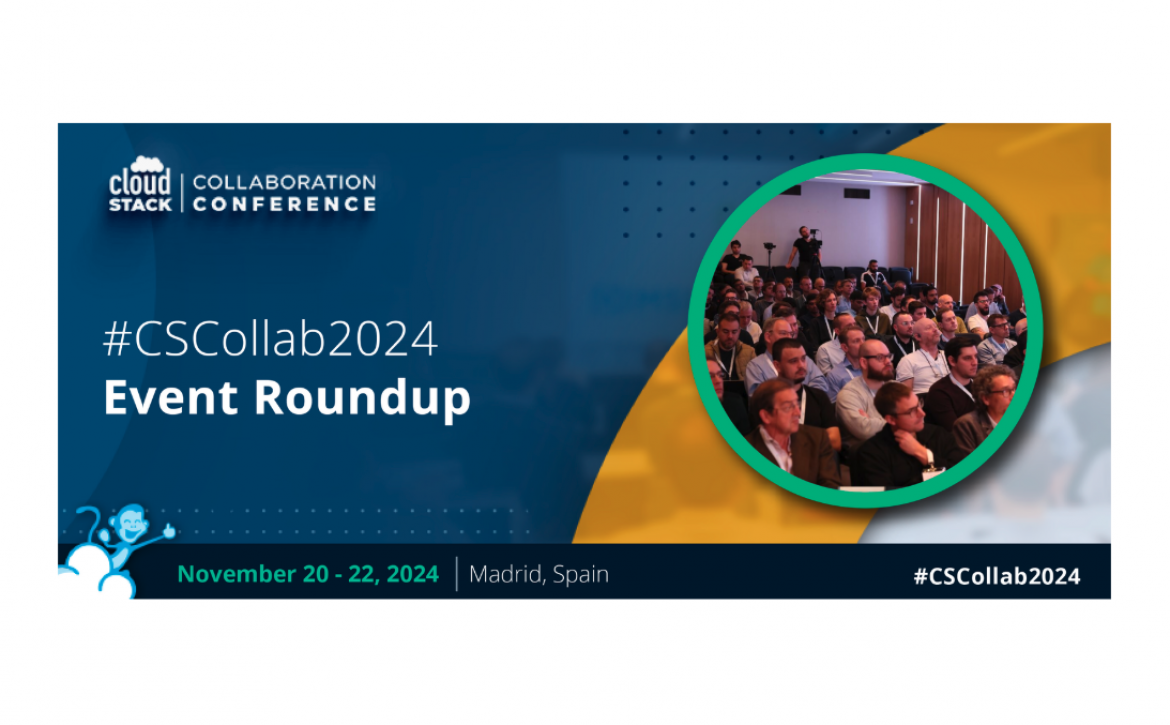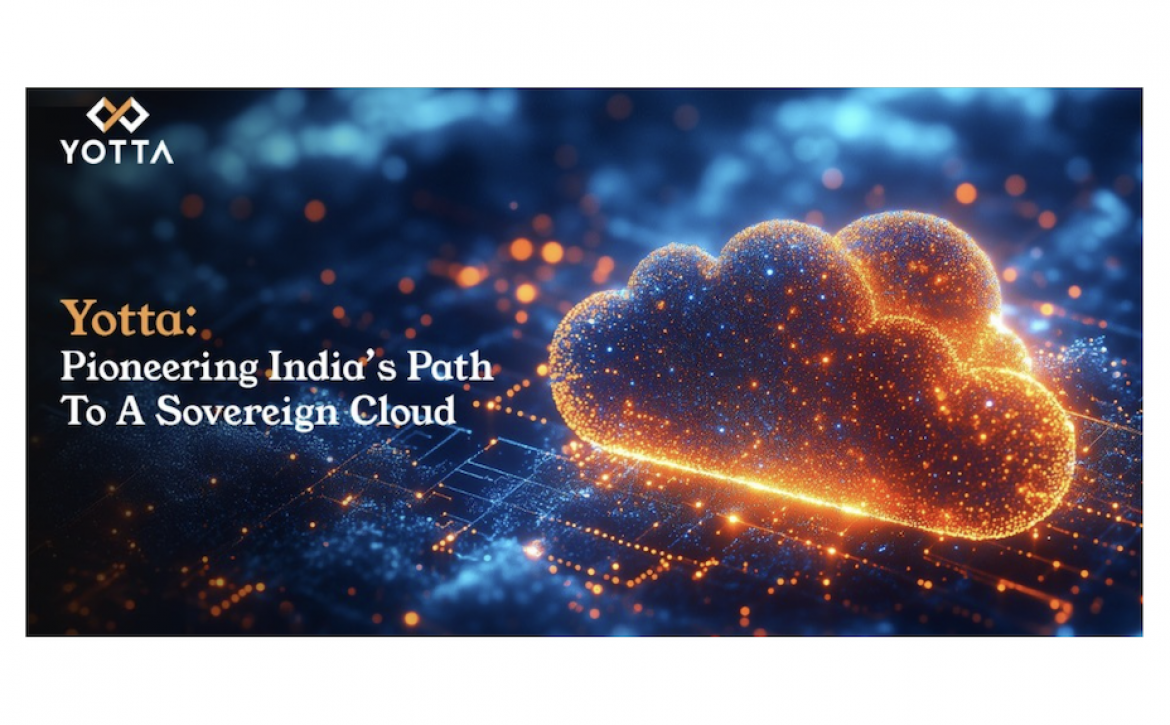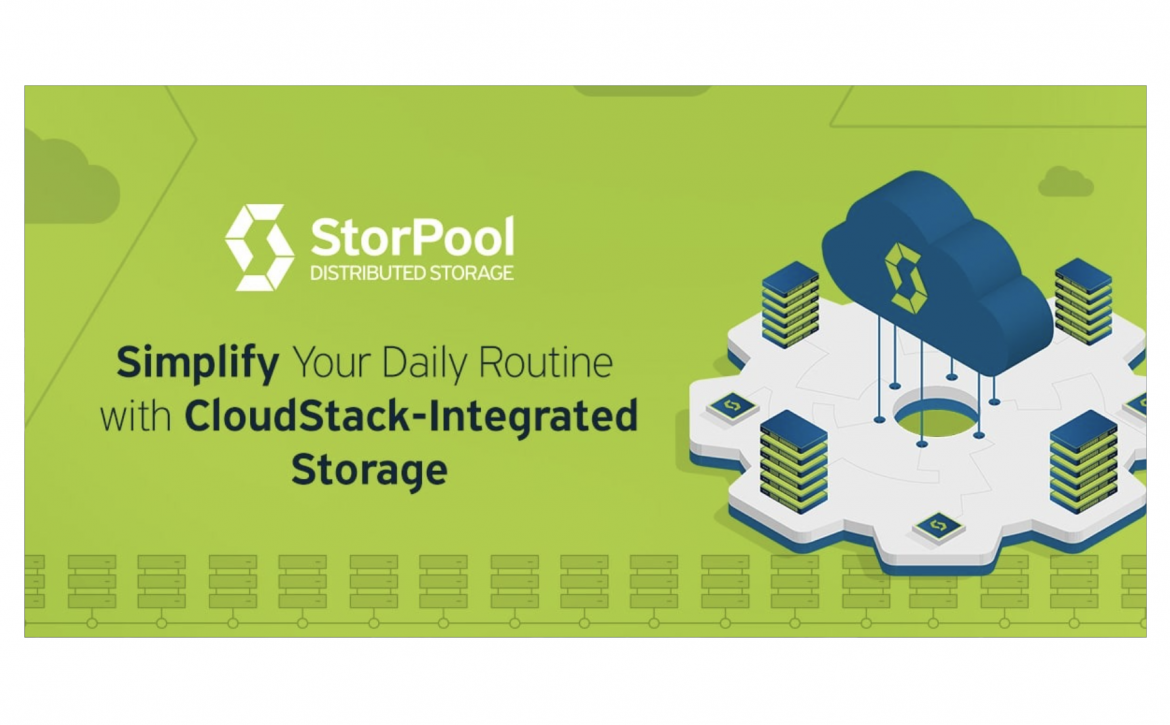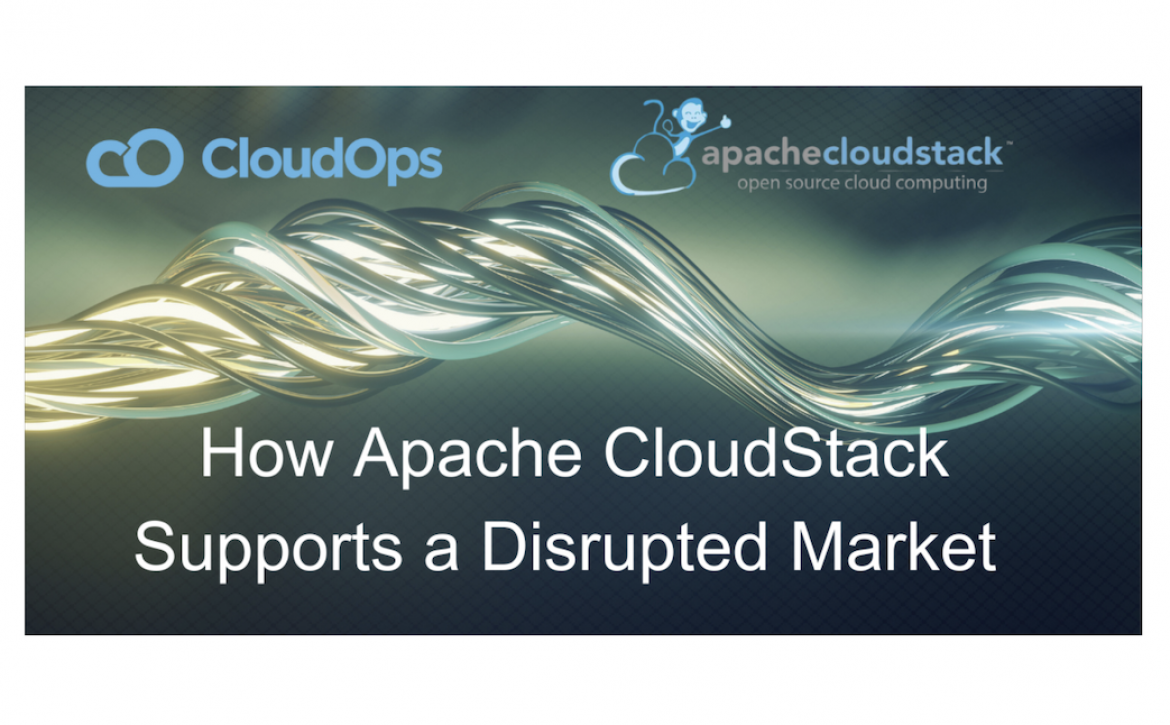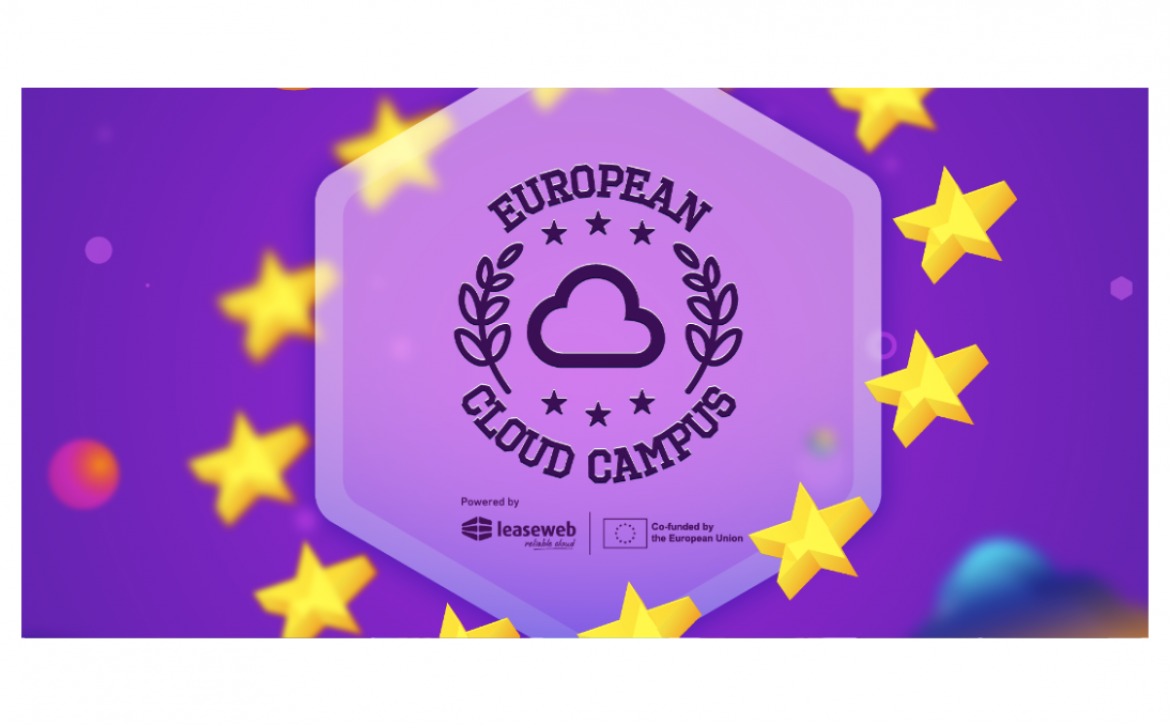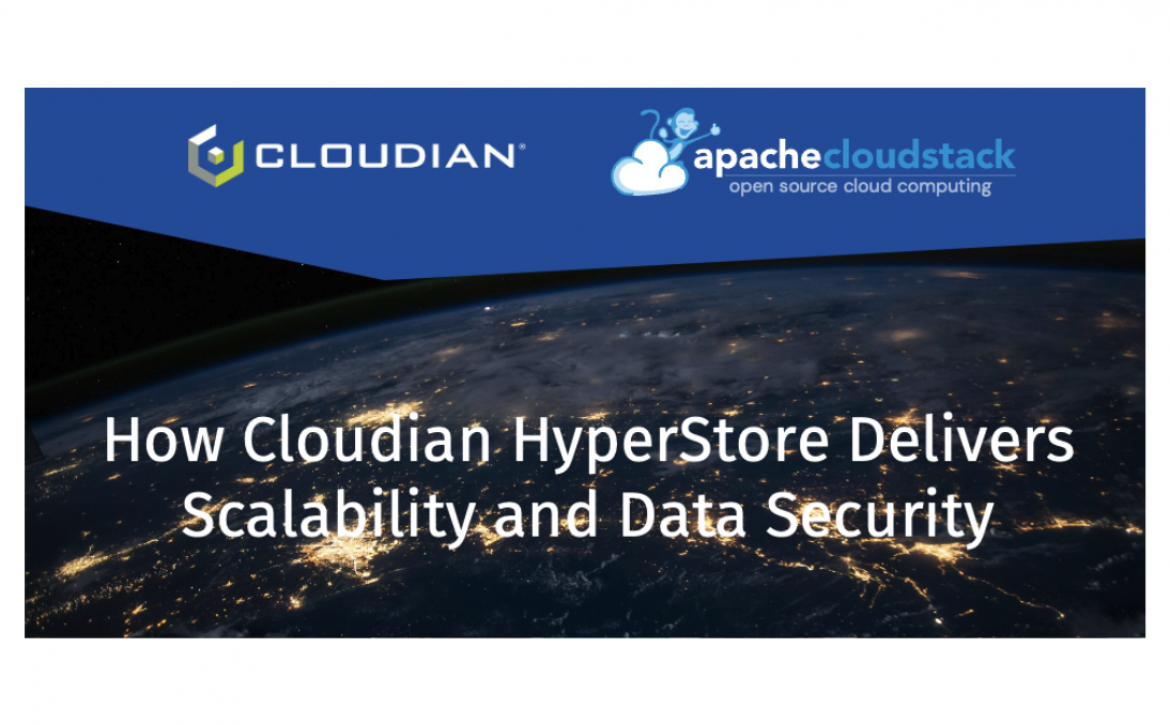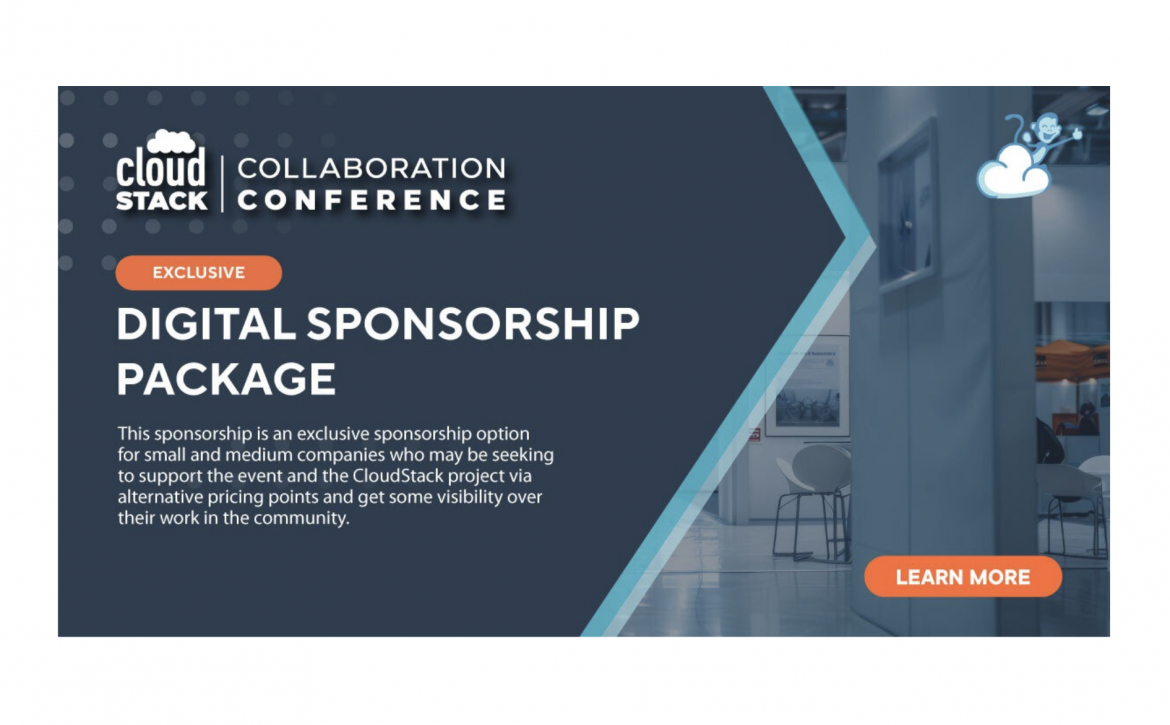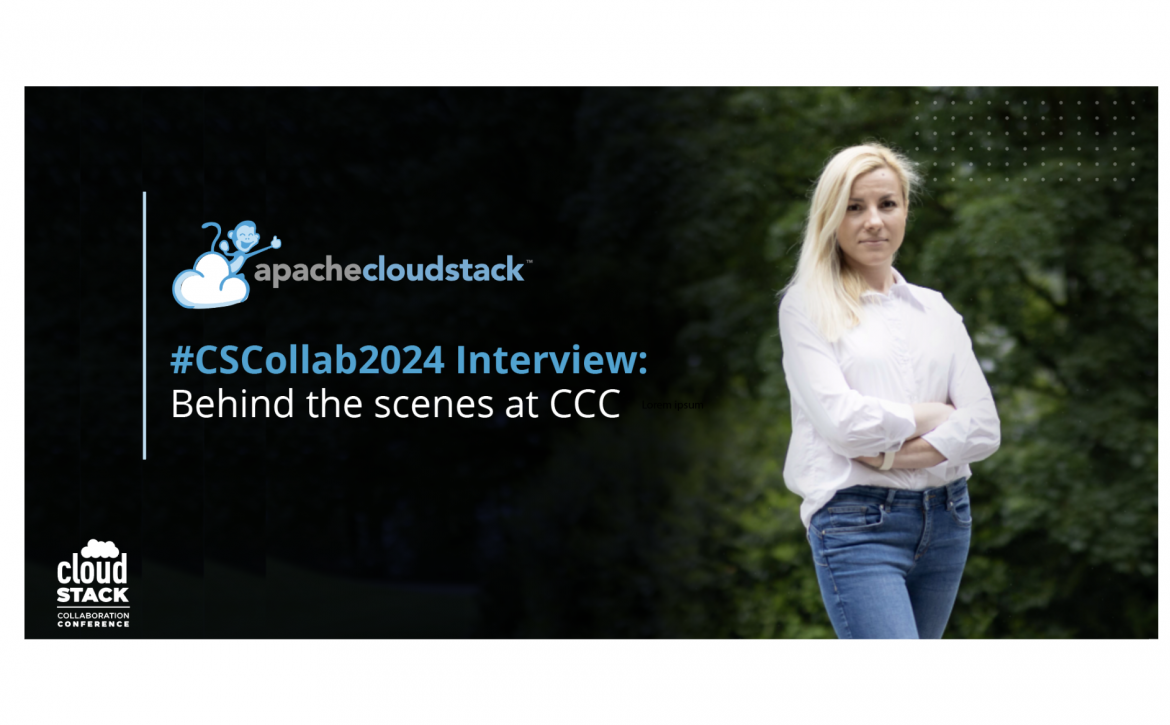Event Roundup: CloudStack Collaboration Conference 2024
CloudStack Collaboration Conference 2024 took place in Madrid, Spain from November 20-22, bringing together CloudStack users, developers, and operators from 40+ countries. This annual, in-person event provided a unique opportunity for the global CloudStack community to connect, collaborate, and help shape the future of the open-source platform.
Held at the Orense 34, the conference featured a series of in-depth sessions, workshops, and discussions on everything from CloudStack architecture and scalability to automation, security, and best practices. It was an invaluable chance for attendees to learn from industry leaders, share real-world experiences, and explore the latest advancements in CloudStack.
We would like to express our sincere gratitude to our sponsors for their support in making this event possible: Aptum, ShapeBlue, LINBIT, StorPool, Cloudian, Yotta, DIMSI, Netris, Your.Online, Leaseweb, proIO, Ampere, CDLAN, Jotelulu and weSystems.
In this blog, we share the session recordings, slides, abstracts and speakers social links. You can also see the pictures taken at the event by clicking the button below.
Thursday Sessions
Keynote: Navigating the Next Wave of Innovation, John White, COO, US Signal
In an era where technological advancements shape the future of industries, open-source stands at the precipice of the next major disruption. This keynote explored the current state of the industry and highlights the immense potential for transformation through open-source technologies.
Keynote: Building India’s Sovereign Hyperscale Cloud with the CloudStack Ecosystem, Sunil Gupta, Co-founder, Managing Director & CEO, Yotta
 Sunil talks about the massive digital transformation in India and how Yotta has partnered with the Government to build multi-region hyperscale sovereign GovCloud (perhaps largest outside US & EU) using CloudStack and other partner’s technology stack.
Sunil talks about the massive digital transformation in India and how Yotta has partnered with the Government to build multi-region hyperscale sovereign GovCloud (perhaps largest outside US & EU) using CloudStack and other partner’s technology stack.
How CloudStack is Helping Leaseweb to Run Cloud Globally, Neven Dogovic, Product Owner Public Cloud, Leaseweb
 In this session, Neven shares Leaseweb’s experience on their extensive experience with Apache CloudStack as a leading cloud provider.
In this session, Neven shares Leaseweb’s experience on their extensive experience with Apache CloudStack as a leading cloud provider.
What is New in Apache CloudStack, Rohit Yadav, VP of Engineering, ShapeBlue
 An in-depth session on the latest advancements in Apache CloudStack, with a special focus on the exciting new features and improvements in the 4.20 release. As one of the leading open-source cloud management platforms, CloudStack continues to evolve to meet the needs of modern cloud infrastructures. This session covered key updates that enhance functionality, scalability, and user experience, empowering cloud operators and developers alike.
An in-depth session on the latest advancements in Apache CloudStack, with a special focus on the exciting new features and improvements in the 4.20 release. As one of the leading open-source cloud management platforms, CloudStack continues to evolve to meet the needs of modern cloud infrastructures. This session covered key updates that enhance functionality, scalability, and user experience, empowering cloud operators and developers alike.
Scaling CloudStack to 100K Hosts and Millions of Instances, Abhishek Kumar, Software Engineer, ShapeBlue
 Abhishek discusses the why, how, and what of an exciting CloudStack scalability project aimed at significantly expanding its capacity to support 100,000 hosts and millions of VMs, volumes, networks, accounts, and domains. Explore CloudStack’s current scalability limits and assess how much further we can push its boundaries. Discuss the innovations, challenges, and strategies required for CloudStack to thrive in hyper-scale environments, and consider what it would take to achieve this ambitious level of performance and reliability.
Abhishek discusses the why, how, and what of an exciting CloudStack scalability project aimed at significantly expanding its capacity to support 100,000 hosts and millions of VMs, volumes, networks, accounts, and domains. Explore CloudStack’s current scalability limits and assess how much further we can push its boundaries. Discuss the innovations, challenges, and strategies required for CloudStack to thrive in hyper-scale environments, and consider what it would take to achieve this ambitious level of performance and reliability.
The Importance of a Proper Out-of-Band Network When Running CloudStack, Wido den Hollander, CTO, Your.Online
 Often overlooked, but super important: a proper Out-of-Band (OOB) network. When everything goes wrong you need proper access to your CloudStack environment in order to diagnose and resolve any issues. A OOB network is very important. In this talk, Wido discusses how to design and implement a good OOB network and have CloudStack benefit from it.
Often overlooked, but super important: a proper Out-of-Band (OOB) network. When everything goes wrong you need proper access to your CloudStack environment in order to diagnose and resolve any issues. A OOB network is very important. In this talk, Wido discusses how to design and implement a good OOB network and have CloudStack benefit from it.
VMware/KVM to CloudStack/KVM Migration – tools and options within CloudStack, Andrija Panic, Cloud Architect, ShapeBlue
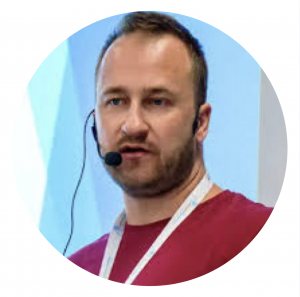 In this talk, you will learn how CloudStack can help you import/migrate VMware/KVM instances/volumes to CloudStack and what options there are for operators to migrate those external workloads.
In this talk, you will learn how CloudStack can help you import/migrate VMware/KVM instances/volumes to CloudStack and what options there are for operators to migrate those external workloads.
Majority in DRBD, Philipp Reisner, CEO, LINBIT
 LINSTOR/DRBD became a primary storage option for Apache CloudStack nearly three years ago. In this session, Philipp shares insights about how DRBD avoids split-brain situations. DRBD relies on the principle of quorum. Philipp dives into the topic and explain all its interesting aspects. How does it deal with an even number of replicas, what does last-man-standing mean in the context, and how does it recover a primary that lost quorum? The session also briefly discusses how it interacts with failover in CloudStack and how we could improve that with future development. The session touches on all the theoretical aspects and also has the necessary configuration snippets relevant to the deployment of LINSTOR/DRBD in the context of Apache CloudStack.
LINSTOR/DRBD became a primary storage option for Apache CloudStack nearly three years ago. In this session, Philipp shares insights about how DRBD avoids split-brain situations. DRBD relies on the principle of quorum. Philipp dives into the topic and explain all its interesting aspects. How does it deal with an even number of replicas, what does last-man-standing mean in the context, and how does it recover a primary that lost quorum? The session also briefly discusses how it interacts with failover in CloudStack and how we could improve that with future development. The session touches on all the theoretical aspects and also has the necessary configuration snippets relevant to the deployment of LINSTOR/DRBD in the context of Apache CloudStack.
Enhancements to CloudStack Kubernetes Service, Pearl Dsilva, Software Engineer, ShapeBlue
 With growing popularity of the CloudStack Kubernetes Service, efforts have been made to further improve this plugin and provide more flexibility. As of ACS 4.21, CKS will support deploying clusters with custom templates, with the ability of configuring different offerings and templates for different Kubernetes node types. It will also have support to add external nodes (VMs / bare metal hosts) as worker nodes to a pre-created CKS cluster. To adapt to production standards, CKS will now support unstacked ETCD as well and will also have a CNI plugin framework which will provide users the flexibility to use a CNI of their choice. In this talk, Pearl delves into the CloudStack CSI driver and it’s integration with CloudStack.
With growing popularity of the CloudStack Kubernetes Service, efforts have been made to further improve this plugin and provide more flexibility. As of ACS 4.21, CKS will support deploying clusters with custom templates, with the ability of configuring different offerings and templates for different Kubernetes node types. It will also have support to add external nodes (VMs / bare metal hosts) as worker nodes to a pre-created CKS cluster. To adapt to production standards, CKS will now support unstacked ETCD as well and will also have a CNI plugin framework which will provide users the flexibility to use a CNI of their choice. In this talk, Pearl delves into the CloudStack CSI driver and it’s integration with CloudStack.
CloudStack Networking in Action: Inspiration, Practical Tips and Sharing Experience, Stephan Bienek, Head of Hosting, WeSystems
 CloudStack provides an awesome Networking feature-set, which enables building simple and complex solutions within one platform. In this session, Stephan shares weSystems experience and practical tips, how they use the various CloudStack Networking features to build tailored solutions. An inspiring tour through Isolated- , Shared- and Layer2-Networks using ConfigDrive, Service functions and external Gateways in IPv4 and IPv6 scenarios.
CloudStack provides an awesome Networking feature-set, which enables building simple and complex solutions within one platform. In this session, Stephan shares weSystems experience and practical tips, how they use the various CloudStack Networking features to build tailored solutions. An inspiring tour through Isolated- , Shared- and Layer2-Networks using ConfigDrive, Service functions and external Gateways in IPv4 and IPv6 scenarios.
Evaluating CloudStack Against Other Hypervisors: A Performance Analysis, Daven Winans, VP of Product, US Signal
 In response to these industry shifts, US Signal initiated a research and development project aimed at exploring alternative virtualization solutions to the dominant Broadcom option. The goal for us all is to ensure predictability in both pricing and performance for our users which we will explore in this conversation.
In response to these industry shifts, US Signal initiated a research and development project aimed at exploring alternative virtualization solutions to the dominant Broadcom option. The goal for us all is to ensure predictability in both pricing and performance for our users which we will explore in this conversation.
Watch Daven’s session, as he uncovers insights and strategies that can empower you to make more informed decisions about your virtualization infrastructure. Don’t miss this opportunity to see how CloudStack measures up against other hypervisors and how it can elevate your cloud operations.
Integrating Wireguard into CloudStack, Marco Ziglioli, Cloud Architect, CDLAN
 CloudStack currently offers support for road warrior and site2site IPsec VPNs. WireGuard is a modern VPN solution known for its lightweight codebase, cryptographic security, and ease of configuration compared to traditional VPN protocols like IPsec or OpenVPN. CDLAN’s goal is to generalize the vpn instantiation allowing the possibility to use wireguard instead of IPsec as protocol. By embedding WireGuard into CloudStack, the platform enhances its ability to provide secure and efficient access to cloud resources in isolated networks. This session examines a possible implementation of WireGuard inside the Virtual Routers and its deployment and configuration through CloudStack.
CloudStack currently offers support for road warrior and site2site IPsec VPNs. WireGuard is a modern VPN solution known for its lightweight codebase, cryptographic security, and ease of configuration compared to traditional VPN protocols like IPsec or OpenVPN. CDLAN’s goal is to generalize the vpn instantiation allowing the possibility to use wireguard instead of IPsec as protocol. By embedding WireGuard into CloudStack, the platform enhances its ability to provide secure and efficient access to cloud resources in isolated networks. This session examines a possible implementation of WireGuard inside the Virtual Routers and its deployment and configuration through CloudStack.
Management Server Maintenance in CloudStack, Suresh Kumar Anaparti, Software Engineer, ShapeBlue
 In this session, Suresh briefs a new feature: “Support for Management Server Maintenance in CloudStack”. This feature enables admins and operators to keep the management server in maintenance mode for patching or to apply any updates. He also covers how the host agents connect to other available servers while preparing for maintenance, along with the introduction of new APIs.
In this session, Suresh briefs a new feature: “Support for Management Server Maintenance in CloudStack”. This feature enables admins and operators to keep the management server in maintenance mode for patching or to apply any updates. He also covers how the host agents connect to other available servers while preparing for maintenance, along with the introduction of new APIs.
Friday Sessions
Building a Sovereign DBaaS supporting CloudStack, Johan Andersson, CTO, Severalnines
In this talk, Johan discusses how Severalnines implemented a scalable, Sovereign DBaaS for open-source databases on CloudStack for Pappaya Cloud. Attendees learn practical considerations for native Kubernetes Control Plane (CP) infrastructure design and get pointers on how to build integrations between the CP and CloudStack from authentication to Day 2 operations automation. You also learn about the specific techniques and tooling needed to streamline and automate core DBaaS workflows, such as infrastructure integration, scaling, high availability and disaster recovery, user and tenant management, and more!
(Slides Pending)
CDLAN Open to Innovation the Choice Was CloudStack, Marco Ziglioli, Cloud Architect, CDLAN
 CDLAN is a Milan based Telecommunications provider in Italy specialized in the B2B market. When they began to look into offering cloud services, they were wary of being locked into a $$Vendor$$. CDLAN’s choice fell on cloudstack and it is heavily used in their B2B cloud services today. Join Marco to hear CDLAN’s story on why and how CloudStack has become an integral part of CDLAN’s offering.
CDLAN is a Milan based Telecommunications provider in Italy specialized in the B2B market. When they began to look into offering cloud services, they were wary of being locked into a $$Vendor$$. CDLAN’s choice fell on cloudstack and it is heavily used in their B2B cloud services today. Join Marco to hear CDLAN’s story on why and how CloudStack has become an integral part of CDLAN’s offering.
BACKROLL 1.0 is Out, Matthias Dhellin, Ousmane Diarra, Pierre Charton, DIMSI
Backroll is an open-source backup solution for KVM guests provided by DIMSI. In this session, you hear about the latest news of the project. DIMSI team members also go through a demo to show you how to set up Backroll, configure your storage and hypervisor in order to backup and restore your VMs. They also showcase the latest features such as a plugin which integrates Backroll into Apache CloudStack.
Routed Mode: Static and dynamic routing, Wei Zhou, Software Engineer, ShapeBlue
 ACS 4.20 introduces the ROUTED mode for IPv4 networks. In ROUTED mode on isolated networks and VPCs the CloudStack VR no longer provides Source NAT, allowing for end-users to create purely routed networks, significantly improving network bandwidth and potentially allowing for public IPs to be allocated to user VMs without operator intervention. Simple dynamic routing introduces dynamic BGP capabilities to ACS, facilitating the use of ROUTED mode networks by automatically peering BGP sessions with upstream routers, thus removing from the cloud provider the onerous task of setting static routes on upstream routers.
ACS 4.20 introduces the ROUTED mode for IPv4 networks. In ROUTED mode on isolated networks and VPCs the CloudStack VR no longer provides Source NAT, allowing for end-users to create purely routed networks, significantly improving network bandwidth and potentially allowing for public IPs to be allocated to user VMs without operator intervention. Simple dynamic routing introduces dynamic BGP capabilities to ACS, facilitating the use of ROUTED mode networks by automatically peering BGP sessions with upstream routers, thus removing from the cloud provider the onerous task of setting static routes on upstream routers.
\
External Deployment Integration in CloudStack, Harikrishna Patnala, Alexandre Mattioli, ShapeBlue
The CloudStack external deployment integration enables the deployment and management of external workloads such as baremetal servers, non-ACS VMs, and SaaS stacks directly from Apache CloudStack (ACS). This talk explores the design, development, and practical utilization of the framework, showcasing its capabilities in managing diverse infrastructure and simplifying multi-environment operations. Attendees gain a deeper understanding of how this integration enhances the flexibility and scope of ACS. This framework is set to be released with Apache CloudStack 4.21.
Network Architecture for public and GPU-based AI cloud providers, Alex Saroyan, CEO, Netris
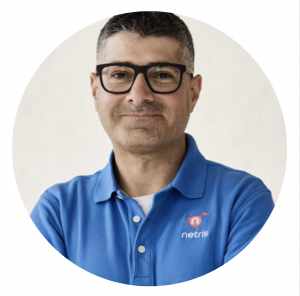 This talk discusses the challenges and solutions of networking for GPU-based AI training clusters. It also offered a Q&A to share experiences of launching GPUaaS clouds based on NVIDIA and Generic GPU and Networking stacks.
This talk discusses the challenges and solutions of networking for GPU-based AI training clusters. It also offered a Q&A to share experiences of launching GPUaaS clouds based on NVIDIA and Generic GPU and Networking stacks.
Snapshot Copy Using Primary Storage, Nikolay Tenev, Solutions Architect, StorPool
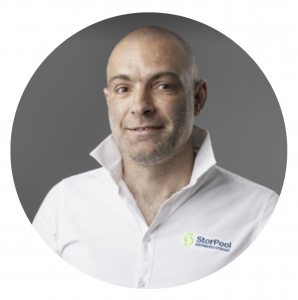 Apache CloudStack 4.19 introduced a new feature called “Snapshot Copy.” It allows you to take a snapshot of a volume in one zone and copy it to another and can be employed in Disaster Recovery scenarios. The implementation depends on the secondary storage and secondary storage VM to copy the snapshots between the zones. This is good for infrequent snapshot copies, but it can become a problem when a large number of snapshots have to be regularly copied. To solve this, we added a new feature, “Snapshot Copy Using Primary Storage”. It optimizes the dataflow and improves efficiency and capacity by offloading the copy operation to the primary storage. Join Nikolay as he discusses how it works and the specifics of the process. If you are planning to implement disaster recovery to your cloud services or want to implement this feature to different storage plugins you don’t want to miss this one.
Apache CloudStack 4.19 introduced a new feature called “Snapshot Copy.” It allows you to take a snapshot of a volume in one zone and copy it to another and can be employed in Disaster Recovery scenarios. The implementation depends on the secondary storage and secondary storage VM to copy the snapshots between the zones. This is good for infrequent snapshot copies, but it can become a problem when a large number of snapshots have to be regularly copied. To solve this, we added a new feature, “Snapshot Copy Using Primary Storage”. It optimizes the dataflow and improves efficiency and capacity by offloading the copy operation to the primary storage. Join Nikolay as he discusses how it works and the specifics of the process. If you are planning to implement disaster recovery to your cloud services or want to implement this feature to different storage plugins you don’t want to miss this one.
Shared FileSystem as a First Class Feature, Abhisar Sinha, Software Engineer, ShapeBlue
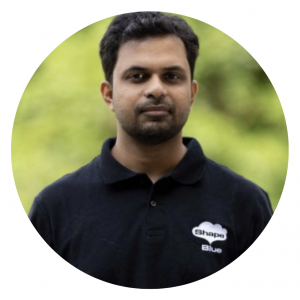 Talk on the new feature Shared FileSystems. A fully managed file storage service, offering a simple way to create and use file systems that can be accessed by multiple instances simultaneously.
Talk on the new feature Shared FileSystems. A fully managed file storage service, offering a simple way to create and use file systems that can be accessed by multiple instances simultaneously.
Cloud Security and Compliances, Kaushik Bora, Principal Solution Architect, Yotta
 The session includes the challenges/solutions to mitigate the general Security and Compliances requirements and a few unresolved issues (specific to security) with Apache CloudStack.
The session includes the challenges/solutions to mitigate the general Security and Compliances requirements and a few unresolved issues (specific to security) with Apache CloudStack.
Monetize CloudStack with CloudOps Software, Richard Hotchkin, Vice President & General Manager, Software, Aptum
 Turn your CloudStack infrastructure into a revenue engine with the CloudOps software. Offer dynamic pricing, product catalogs, commitments, and invoicing, all while enabling reseller and branding capabilities across multi-tenant environments. Unlock integrations with AWS, Azure, GCP, Kubernetes, and more to maximize your investment.
Turn your CloudStack infrastructure into a revenue engine with the CloudOps software. Offer dynamic pricing, product catalogs, commitments, and invoicing, all while enabling reseller and branding capabilities across multi-tenant environments. Unlock integrations with AWS, Azure, GCP, Kubernetes, and more to maximize your investment.
2 years of VMware Exodus: our perspective as a recognized Open-Source virtualization alternative, Olivier Lambert, CEO, Vates
 This talk explores open-source alternatives to VMware virtualization, based on the experience of Vates. Combining both technical and market perspectives, Olivier discusses global trends, challenges in migrating to open-source solutions, and the potential implications of VMware’s acquisition by Broadcom. The presentation covers technical aspects of the virtualization stack, including hypervisors, orchestration, and backups, and how these elements can be integrated into modern infrastructures. Additionally, Olivier examines the impact on cloud and edge computing, as well as the roles of major industry players such as Nutanix, Microsoft, and IBM/RedHat.
This talk explores open-source alternatives to VMware virtualization, based on the experience of Vates. Combining both technical and market perspectives, Olivier discusses global trends, challenges in migrating to open-source solutions, and the potential implications of VMware’s acquisition by Broadcom. The presentation covers technical aspects of the virtualization stack, including hypervisors, orchestration, and backups, and how these elements can be integrated into modern infrastructures. Additionally, Olivier examines the impact on cloud and edge computing, as well as the roles of major industry players such as Nutanix, Microsoft, and IBM/RedHat.
Seamless CloudStack Integration: Cloudian’s Role in Modern Cloud Architectures, Vikram Fernandes, Director of Business Development and Alliances, Cloudian
 The integration of Cloudian Hybrid Cloud with Apache CloudStack delivers a scalable, flexible, and cost-effective solution for managing object storage within hybrid cloud environments. Cloudian’s HyperStore, a S3-compatible object storage platform, complements CloudStack’s infrastructure management by enabling seamless storage provisioning, data tiering, and cross-cloud operations. This integration simplifies hybrid cloud deployments, ensuring data sovereignty, reducing latency, and optimizing resource utilization. It supports a wide array of use cases, including disaster recovery, backup, content distribution, and analytics. With native S3 API compatibility and automated policy-based storage management, the combined solution enhances agility while reducing operational overhead for enterprises and service providers.
The integration of Cloudian Hybrid Cloud with Apache CloudStack delivers a scalable, flexible, and cost-effective solution for managing object storage within hybrid cloud environments. Cloudian’s HyperStore, a S3-compatible object storage platform, complements CloudStack’s infrastructure management by enabling seamless storage provisioning, data tiering, and cross-cloud operations. This integration simplifies hybrid cloud deployments, ensuring data sovereignty, reducing latency, and optimizing resource utilization. It supports a wide array of use cases, including disaster recovery, backup, content distribution, and analytics. With native S3 API compatibility and automated policy-based storage management, the combined solution enhances agility while reducing operational overhead for enterprises and service providers.
A New CloudStack Driver Model, Rohit Yadav, VP of Engineering, ShapeBlue
 This talk proposes an exciting “Mother of All Plugins” framework for Apache CloudStack. This innovative meta-framework empowers vendors, operators, and admins to extend CloudStack’s capabilities using any programming language of their choice and offer more flexibility and speed for developing custom features and extensions. Join Rohit to discover how this game-changing driver model can empower you to customise CloudStack faster, giving you a competitive edge in driving cloud innovation and meeting evolving demands.
This talk proposes an exciting “Mother of All Plugins” framework for Apache CloudStack. This innovative meta-framework empowers vendors, operators, and admins to extend CloudStack’s capabilities using any programming language of their choice and offer more flexibility and speed for developing custom features and extensions. Join Rohit to discover how this game-changing driver model can empower you to customise CloudStack faster, giving you a competitive edge in driving cloud innovation and meeting evolving demands.
The Apache CloudStack Governance Model, Daan Hoogland, Application Architect, ShapeBlue
 The Apache CloudStack project is part of the large portfolio of ASF projects and acts as an independent software project under the Apache umbrella. It is bound by the Apache bylaws, but also has its own bylaws and traditions. As part of the ASF it is bound by an honour code of inclusivity. It is also a consent based democratic entity. What this all means is explained in the talk.
The Apache CloudStack project is part of the large portfolio of ASF projects and acts as an independent software project under the Apache umbrella. It is bound by the Apache bylaws, but also has its own bylaws and traditions. As part of the ASF it is bound by an honour code of inclusivity. It is also a consent based democratic entity. What this all means is explained in the talk.
GPU as a first class feature in CloudStack, Vishesh Jindal, Software Engineer, ShapeBlue
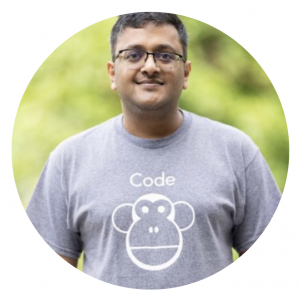 With the rise of AI, VDI, cryptocurrency mining, simulations, and advanced graphics processing, the demand for GPU resources has surged dramatically. However, Apache CloudStack currently lacks first-class support for GPUs. This talk covers the current state of GPU support in CloudStack, the challenges of managing GPU resources, and proposes a feature design to make GPU a first-class CloudStack resource. Attendees gain insights into the technical hurdles and potential solutions to bring seamless GPU support into their IaaS platform.
With the rise of AI, VDI, cryptocurrency mining, simulations, and advanced graphics processing, the demand for GPU resources has surged dramatically. However, Apache CloudStack currently lacks first-class support for GPUs. This talk covers the current state of GPU support in CloudStack, the challenges of managing GPU resources, and proposes a feature design to make GPU a first-class CloudStack resource. Attendees gain insights into the technical hurdles and potential solutions to bring seamless GPU support into their IaaS platform.
Using the Packer Provider for CloudStack: What’s Missing, Swen Brüseke, CEO, ProIO
 Wouldn’t it be nice to create CloudStack templates directly on CloudStack itself, fully automated, without any manual intervention? In this session, Swen shares how proIO is using HashiCorp’s Packer to achieve this and what features they needed to develop for the community-driven provider to get closer to this goal. Demo included!
Wouldn’t it be nice to create CloudStack templates directly on CloudStack itself, fully automated, without any manual intervention? In this session, Swen shares how proIO is using HashiCorp’s Packer to achieve this and what features they needed to develop for the community-driven provider to get closer to this goal. Demo included!
NSX Integration on CloudStack, Nicolas Vazquez, Software Engineer, ShapeBlue
 In this talk, Nicolas goes through the VMware NSX integration on Apache CloudStack, introduced on version 4.20 as a CloudStack plugin. The NSX plugin introduces NSX 4 as a network service provider in CloudStack allowing users to create and manage Virtual Private Clouds (VPCs) in CloudStack utilizing NSX SDN, orchestrating the network functionalities such as: routing, port forwarding, load balancing, DNS, DHCP, ACLs and more.
In this talk, Nicolas goes through the VMware NSX integration on Apache CloudStack, introduced on version 4.20 as a CloudStack plugin. The NSX plugin introduces NSX 4 as a network service provider in CloudStack allowing users to create and manage Virtual Private Clouds (VPCs) in CloudStack utilizing NSX SDN, orchestrating the network functionalities such as: routing, port forwarding, load balancing, DNS, DHCP, ACLs and more.
A Customer-centric Approach to Reimagining Private Cloud Hosting, David Humes, VP of Product, US Signal
 This session focuses on US Signal’s customer-centered approach to building OpenCloud, as well as what they see as opportunities for the CloudStack project on the horizon in terms of supporting enterprise workloads.
This session focuses on US Signal’s customer-centered approach to building OpenCloud, as well as what they see as opportunities for the CloudStack project on the horizon in terms of supporting enterprise workloads.
CloudStack’s role in the era of AI clouds, Kshitish Purohit, CPO, Yotta
 What role can CloudStack play in the AI revolution? What are the opportunities for development? What value(s) and value system does CloudStack bring to the table? In this session, Kshitish dives into the answers.
What role can CloudStack play in the AI revolution? What are the opportunities for development? What value(s) and value system does CloudStack bring to the table? In this session, Kshitish dives into the answers.
Backup & Recovery in CloudStack, Jithin Raju, Cloud Architect, ShapeBlue
 The ability to reliably back up and restore cloud instances is critical for maintaining operational continuity and safeguarding against data loss. This session provides an overview of the backup and recovery options available within CloudStack. The talk includes Backup and Recovery framework and providers: Veeam, Dell NetWorker, Dimsi Backroll, and NAS. This session is ideal for CloudStack administrators, IT managers, and anyone responsible for data protection in cloud environments.
The ability to reliably back up and restore cloud instances is critical for maintaining operational continuity and safeguarding against data loss. This session provides an overview of the backup and recovery options available within CloudStack. The talk includes Backup and Recovery framework and providers: Veeam, Dell NetWorker, Dimsi Backroll, and NAS. This session is ideal for CloudStack administrators, IT managers, and anyone responsible for data protection in cloud environments.
Creating a Cloudstack Usage Service with Kafka, Aron Wagner, CEO, American Cloud
 The current CloudStack usage service did not meet American Cloud’s needs to build a reliable billing engine, so they built a new one using Kafka and Cloudstack Events. Watch the session to learn more!
The current CloudStack usage service did not meet American Cloud’s needs to build a reliable billing engine, so they built a new one using Kafka and Cloudstack Events. Watch the session to learn more!
Evaluating Cloud Costs: On-Premise CloudStack vs. Hyperscalers, Marco Sinhorelli, Technical Marketing Manager, ShapeBlue
 Choosing between running your own cloud infrastructure and using services from major providers like AWS, Azure, or Google Cloud can be a tough decision. In this talk, Marco walks you through a comparison of the costs involved in both options using a Cloud Cost Calculator and Pricing Report. He shares insights into how these costs stack up over time, based on a case study of a mid-sized company. If you’re considering whether to stick with a public cloud or move to an on-premise setup, this session gives you a clear picture of the financial implications and helps you make a more informed choice.
Choosing between running your own cloud infrastructure and using services from major providers like AWS, Azure, or Google Cloud can be a tough decision. In this talk, Marco walks you through a comparison of the costs involved in both options using a Cloud Cost Calculator and Pricing Report. He shares insights into how these costs stack up over time, based on a case study of a mid-sized company. If you’re considering whether to stick with a public cloud or move to an on-premise setup, this session gives you a clear picture of the financial implications and helps you make a more informed choice.


